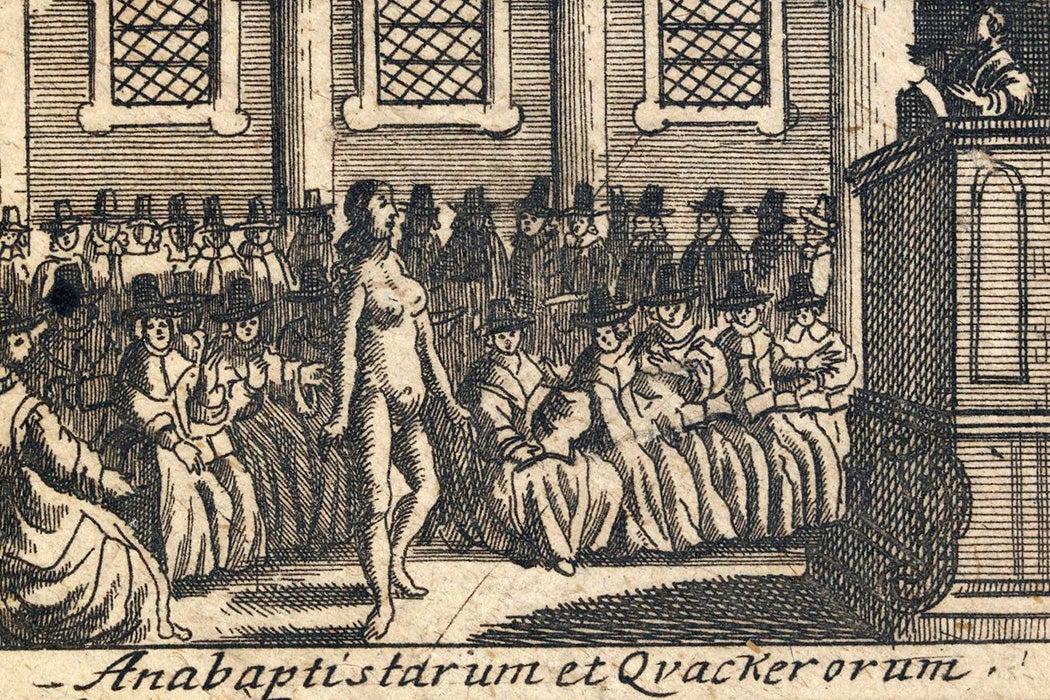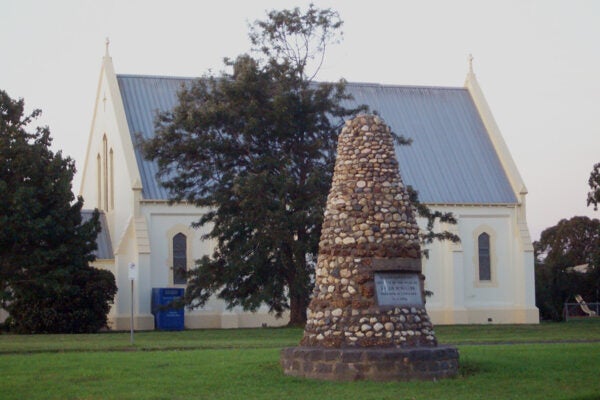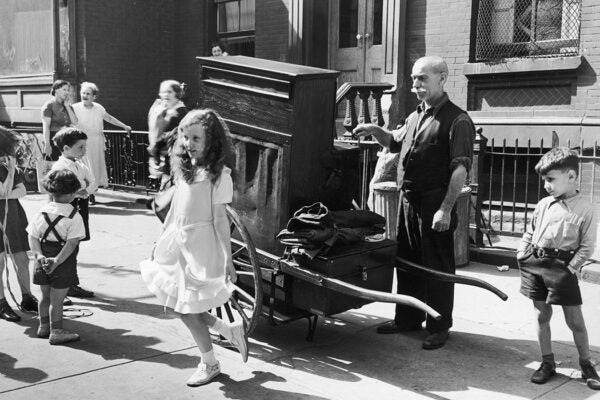A woman protestor arrived at a religious event attended by dignitaries—completely naked. She yelled “Resurrection, I am ready for thee!” before security guards removed her from the premises. This sounds like a modern-day incident, but it took place in London in 1652. As Jean-Pierre Cavaillé explains, this was a powerful political act.
“The huge scandal of a woman appearing naked in public was indeed exacerbated and taken to extremes,” he writes, “since all those who witnessed the event understood perfectly well that this was neither a madwoman nor a whore, but a woman who had chosen to deliver a revolutionary religious and political message in the form of a scandalous action.”
England in 1652 was still reeling from a bloody civil war, and ruled by Oliver Cromwell, who was among those who witnessed the nude protest. Indeed, he may have been the intended viewer. Faith and politics were inseparable in early modern Europe, and Quakerism was one of a number of new religious groups that were emerging in Britain.
“The Whitehall happening was just one of the first in a long series of prophetic and protest displays by both men and women who went naked in public places (sacred and profane),” Cavaillé writes, “and it was prolonged in New England, accompanying the emergence and development of the Quaker movement.”
Nudity was perceived as having particular meanings—either demonstrating prelapsarian innocence or uncivilized barbarism. Differing religious sects had their own attitudes towards clothing and other groups’ use of it. But the Quakers were saying something different when they used their own bodies as a symbol of protest.
“In fact, the nakedness of Quakers, men and women, was not designed (or only in a very marginal and contradictory way) to demonstrate a state of innocence and moral perfection before God,” Cavaillé writes. Rather, it was
intended to denounce the entirely negative spiritual “nakedness” of those before whom they were demonstrating, and as an anticipation of what God had in store for the latter: that is, stripping them bare of all their earthly powers, belongings and social prerogatives.
In England, there were two waves of such protests: from 1652 to 1655, and again from 1659 to 1661—the end of Cromwell’s rule and the Restoration of the monarchy. That it was a practice supported by Quaker groups, rather than just the random act of individuals, is suggested by the organization of the protests.
“The naked Quaker was often accompanied by one or two Friends of the same sex, fully clothed and providing support in adversity,” reports Cavaillé. Additionally,
it was not uncommon for the Quaker to forewarn the local community of Friends, seeking their agreement. Sometimes the performance, if it did not end with an arrest (which it often did), would be concluded with a proselytizing meeting. There is at any rate no doubt that this practice of going naked “as a sign” received very wide approval among Quakers during these years.
Similar nude protests were made by Quakers on the other side of the Atlantic in the years to follow. As a political tactic, it seems to have given ammunition to their enemies as much as gained support for their cause. When Roger Williams of the Colony of Rhode Island and the Providence Plantations inveighed against Quakers in 1672, he used the practice to condemn them, claiming that
the stripping Naked of…Women and Maidens [is] a case worse than Savage and Barbarous, only practised by Bruites, and sometimes by Indians, and Whores in their drink, when all Modesty and Reason is overwhelmed with more then [sic] common Drunkenness. Who can but abhor to think of such whorish and monstrous Immodesty, such an hellish Incentive to filthy Lusts, and that under the most holy name of the Spirit of God.
To detractors such as Williams, nude protests showed the Quakers as immoral, evil, and uncivilized. To Quakers, however, nudity could be seen as defiance against the common punishment they tended to face for their religion in New England, which involved being stripped (at least above the waist) and whipped. They were showing their willingness to face such a fate in defense of their beliefs.
Weekly Newsletter
But nudity as a protest tactic, for Quakers at least, fell away with time. Within a century, even Quaker leaders were embarrassed by this past practice:
“In the late nineteenth and early twentieth centuries,” writes Cavaillé,
historians of the movement, even those most favourable to the Quakers, or even Quaker historians themselves, regarded this former practice with horror, seeing it as an example of mental disturbance: “infirmities of judgment and gusts of emotional impulse and nervous exaltation,” as [historian] William Braithwaite put it.
But perhaps we should see those Quakers as brave, or at least having a willingness to put themselves on the line for their beliefs. In more recent decades, nudity as a protest tactic has been used by hippies and by the international feminist group FEMEN. The shock value of a naked body still carries a forceful message.







